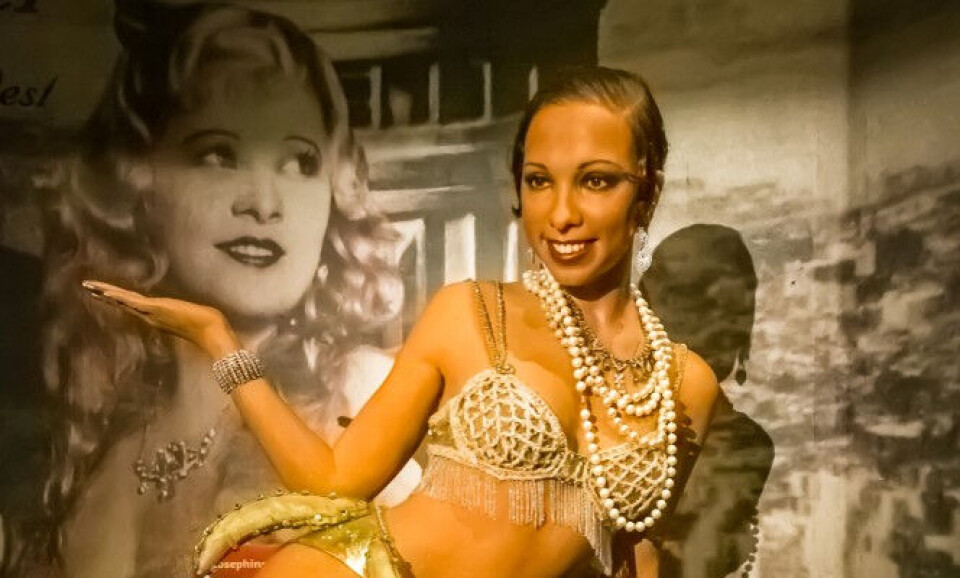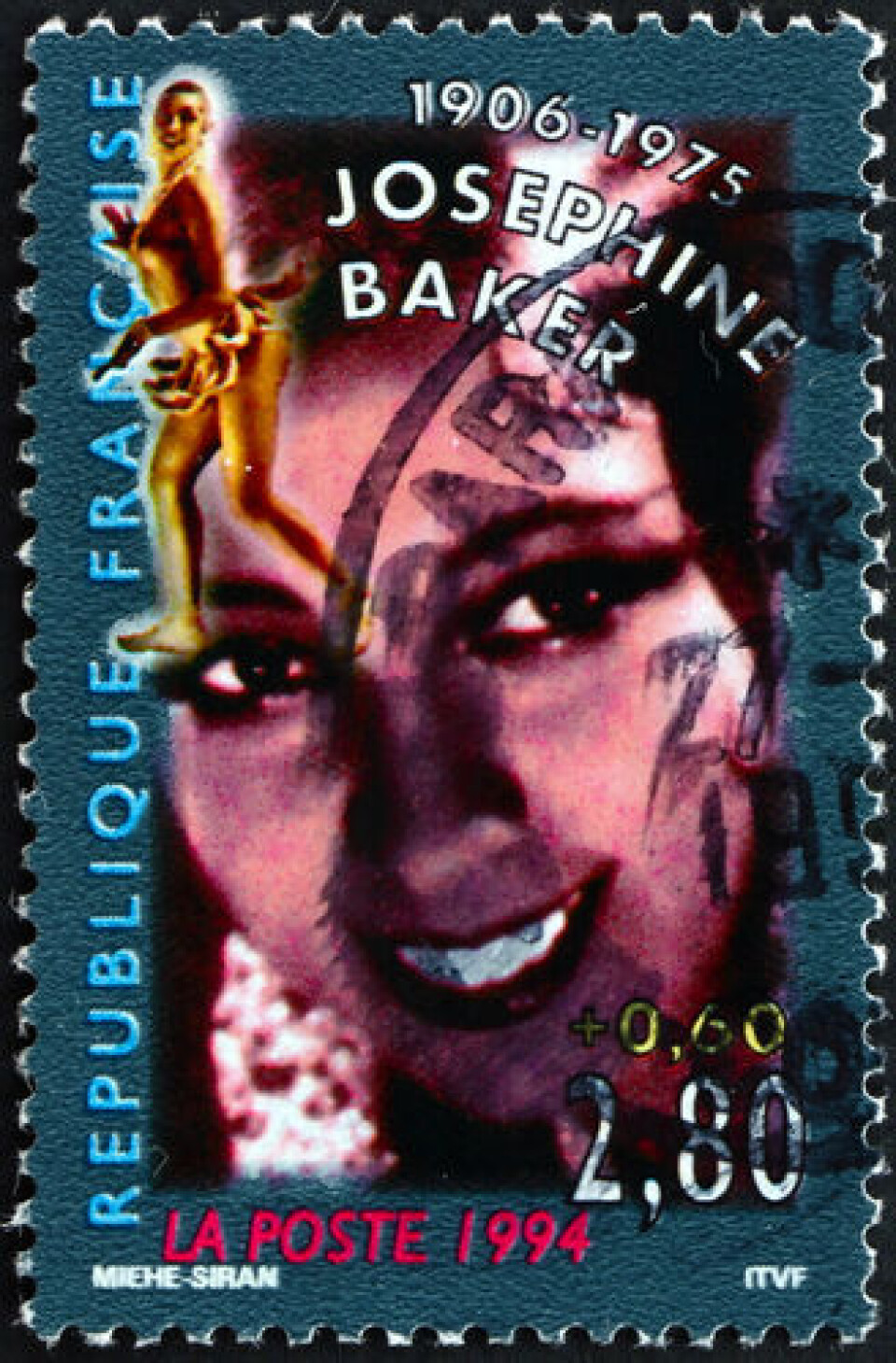-
Five departments on orange alert as heavy rain and floods continue in south of France
Conditions are expected to worsen through the afternoon
-
‘I saw flames’: Air France plane makes emergency landing in Lyon after technical fault
Flight carrying 173 passengers to Ajaccio diverted to Lyon-Saint-Exupéry on Saturday
-
Farmers’ protests ease but key motorway blockades hold firm in south-west France
Pressure on the government over its handling of cattle culls continues as Christmas nears despite a drop in protests
Empire State Building lights up for US-French icon Joséphine Baker
The New York skyscraper was illuminated in honour of the singer, dancer, civil rights activist and World War Two resistance fighter, on the eve of her entry into Paris’ Panthéon

The Empire State Building lit up red, white and blue last night (November 29) to honour the artist, civil rights activist and French resistance member Joséphine Baker on the eve of her entry into the Panthéon in Paris.
The American-born singer, dancer and actress is the first black woman to be laid to rest in the mausoleum, which is the resting place of some of France’s greatest national figures.
Read more:US-born French icon Josephine Baker to enter France’s Panthéon
Read more:New square in Monaco marks Joséphine Baker’s links with Princess Grace
Born in Missouri in 1906, Ms Baker was known as an iconic entertainer, but also fought as part of the French resistance movement during World War Two. President Emmanuel Macron announced that she would enter the Panthéon in August. Her body however, at the request of her family, will remain in a cemetery in Monaco where she was buried in 1975.
As darkness fell over New York last night, the top of the Empire State Building was illuminated with the colours of the French flag, “in celebration of entertainer and civil rights icon Josephine Baker as she becomes the first black woman inducted into the Panthéon,” said a Tweet published on the tower’s account.
Tonight, in partnership with @franceinnyc, we glow blue, white, and red in celebration of entertainer and civil rights icon Josephine Baker as she becomes the first black woman inducted into the Pantheon. #ESBright pic.twitter.com/q58BxmfN58
— Empire State Building (@EmpireStateBldg) November 29, 2021
Evan Fournier, French player for the New York Knicks basketball team, paid tribute to Ms Baker’s “bravery” at the lights switch-on, saying: “When we look at what happened last year or two years ago,” following the murder of George Floyd “she was ahead of her time.”
Also present at the ceremony was Jari Bouillon-Baker, one of the 12 children who were adopted by Ms Baker, described by her as her “rainbow tribe.” Mr Bouillon-Baker, now aged 68 and living in New York, wished to remember “our mum” and the “love she had for us.”
Across the Atlantic in Paris, a station on Métro line 13 has been renamed to Gaîté-Joséphine Baker in her honour.
The tribute was announced yesterday (November 29) by her son Brian Bouillon-Baker, who had proposed the idea to the Transport Ministry and RATP, as “it is on the Rue de la Gaîté that the Bobino theatre [where Ms Baker gave her last concert] is found, and at the end of this road is Josephine Baker square.”
The station’s new name will be inaugurated today at 10:00.

Who was Josephine Baker?
Josephine Baker was born on June 3, 1906 to a poor family in St Louis (Missouri) and began working as a live-in maid for white families at the age of eight.
She travelled to New York aged 13 and performed in Broadway chorus lines before taking part in a tour which would bring her to Paris, her eventual adopted home.
Soon after she arrived in Paris, Ms Baker had become one of the most famous performers of the Folies Bergère - a cabaret music hall - and her part in the Un vent de folie show, where she appeared in nothing but a short skirt make of artificial bananas, made her an emblematic figure of the Roaring Twenties.
Ms Baker was the first black woman to star in a major motion picture, Siren of the Tropics, which was released in 1927.
Josephine Baker (1906-1975) is to become first black woman to be inducted into Paris Panthéon as a hero of France, Pres. Macron confirms. Died a devote Catholic & remains are currently in Monaco, but will join Zola, Hugo, Rousseau (etc) in the secular mausoleum. Via @le_Parisien pic.twitter.com/YAilxSP1Uh
— Peter Allen (@peterallenparis) August 22, 2021
She eventually renounced her US citizenship and became a French national on her first marriage to industrialist Jean Lion in 1937.
During World War Two, Ms Baker began working for the French military intelligence agency Deuxième Bureau, which saw her socialising with Germans in order to collect information.
She later housed members of the resistance movement at her Dordogne Château de Milandes and travelled to North Africa to continue her intelligence gathering missions in Spain, Portugal, Morocco, Libya, Egypt, Tunisia and Lebanon, hiding her notes in the lining of her underwear or writing them in invisible ink on her sheet music.
After the war ended, she was awarded the Croix de guerre and the Médaille de la Résistance française and made a Chevalier of the Légion d’honneur by General Charles de Gaulle.
In 1951, she was invited to perform in a Miami nightclub but refused to perform to a segregated audience and won a public battle for its desegregation.
Despite her celebrity, Ms Baker was still subjected to racial discrimination in the US, and refused accommodation at several hotels because of her skin colour.
In 1963, she was the only woman to speak at the historic March on Washington at which Martin Luther King Jr made his ‘I have a dream’ speech.
By 1968, Ms Baker found herself in debt, and lost her home as a result. She was offered a home in Roquebrune, near Monaco, by Princess Grace.
On April 8, 1975, she starred in a show called Joséphine à Bobino 1975, looking back on her 50 years in showbusiness, and was met with rave reviews. However, just a day later, she suffered a cerebral hemorrhage and then died on April 12, aged 68.
Her funeral drew more than 20,000 mourners and she was interred in the Cimetière de Monaco after a family service at Saint-Charles Church in Monte Carlo.
President Macron’s decision to honour her at the Panthéon is the result of a petition by a campaign group involving one of her sons.
Her entry into the mausoleum today commemorates her first appearance at the Théâtre des Champs-Élysées on November 30, 1925.
The ceremony will begin at 17:30 and is expected to involve 2,000 guests. Ms Baker’s body will remain in Monaco on her family’s wishes, but her presence will be symbolised by a cenotaph containing samples of earth from Monaco, Paris, her Château de Milandes in Dordogne and her native St Louis.
En attendant qu’elle y rentre mardi, le Panthéon s’est magnifiquement habillé en Joséphine Baker 🇫🇷 pic.twitter.com/I8aiwOlzLk
— Arthur Kenigsberg (@KenigsbArthur) November 28, 2021
Ms Baker’s cenotaph will move up the Rue Soufflot, carried by six members of the French Air Force, of which she was a sous-lieutenant and accompanied by her song ‘Me revoilà Paris’.
During the ceremony, President Macron will make a speech about Ms Baker’s contribution to French history, and then the cenotaph will enter the crypt, where the public will be able to view it on December 4 and 5.
Related articles
Two remarkable pilots whose lives both took flight in France
























